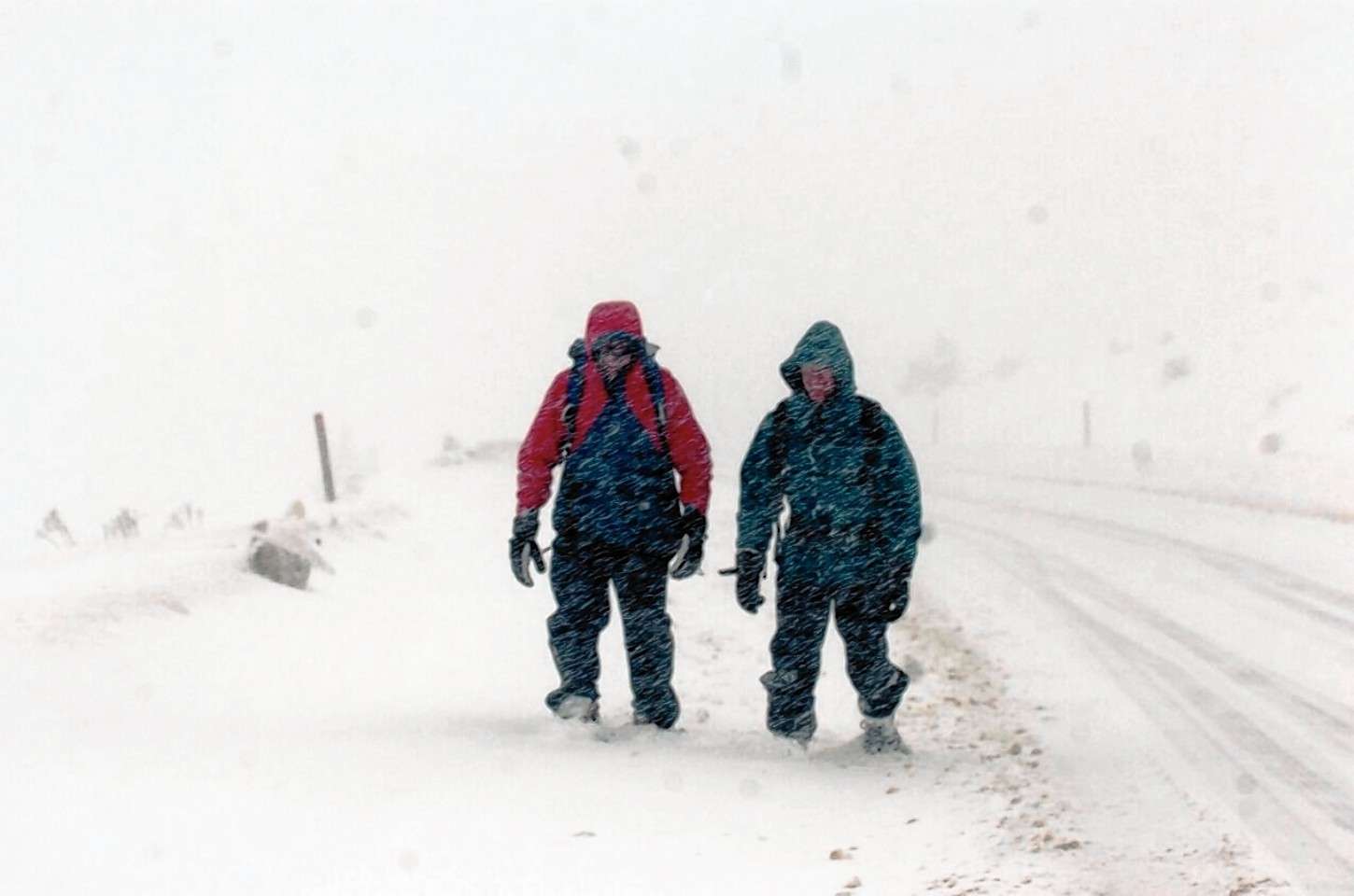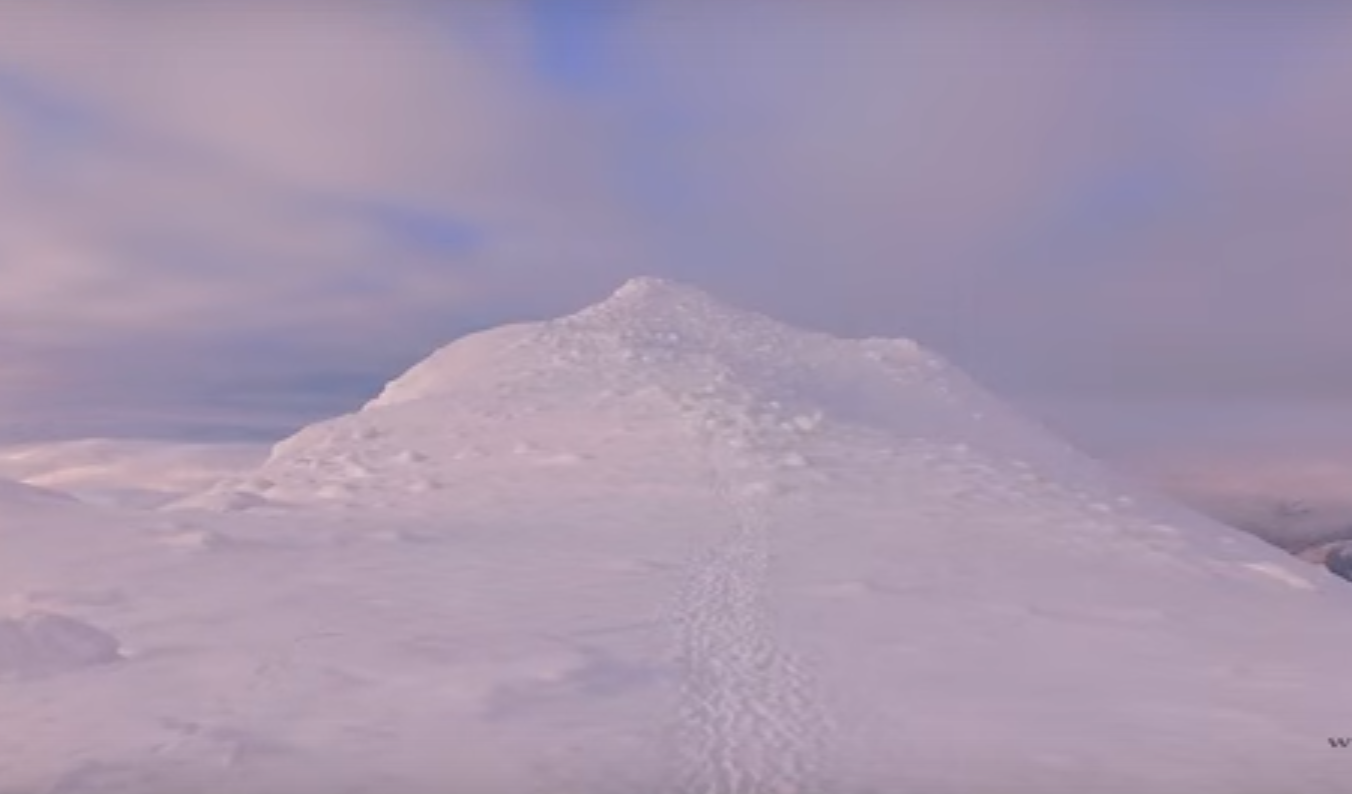As the cold weather sets in around us, most of you will be turning up the heating and digging out of the wardrobe your heavy winter clothing.
However many of you will be trying to keep warm without understanding the key principles. Understanding the basics of how to keep warm and how we lose heat will enable you to use targeted logic and maximise your efficiency on the Munros this winter.
Keeping warm is really an art form. You need to understand body heat loss, the bodies physical responses, how to and why to layer clothing, ideal requirements for cold weather clothing and how to regulate your body temperature… and that’s just for starters!
No wonder novices and relatively experienced Munroists have such a hard time on the inhospitable, snow-capped and wind-blown Munros.
So for those looking for an easier time of it, here are the key principles…
–
Understanding Body Heat Loss
Body heat loss also known as heat exchange happens through radiation, respiration, evaporation, convection and conduction.
Radiation is transfer of your body heat to its surroundings. For example by sitting on the cold ground.
Conduction is the direct transfer of heat from one object to another. Water has excellent conductive qualities. Keep dry.
Evaporation happens when sweat produced by exertion rapidly cools exposed and uninsulated parts of the body. It is vital to ventilate by opening zips etc as you start to sweat.
Respiration through breathing cools the body and produces heat loss.
Convection happens when air currents draw heat away from the body. This happens when air temperature or water temperature is below body temperature. Keep wind tight whist remaining cool when mobile.

–
Physical Responses To The Cold
To heat the body, our blood vessels dilate, sweating increases, the heart rate and breathing increases. When the body cools the opposite occurs. Blood vessels constrict, shivering starts, goose bumps form and small intricate manual tasks are impaired.
We have all had cold numb fingers be it as a child in a snow ball fight or feeling the painful stab of cold in the tips of our fingers. This is natural as the body pools its warm blood around its vitally important internal organs.
To complicate matters there are more than one type of cold. You have wet cold. This is when the average temp is above -10. In wet cold the effects of evaporation are greater as this type of cold has generally a high moisture content. This is a lethal combination as moisture is extremely efficient in conducting heat away from the body.
The next type of cold is a dry cold. This is where average temp is below -10. The effect of radiation will be greater and as such, more insulation and layers will be needed. A dry cold conversely enough can be at times easier to cope with when compared to a wet cold.
Mix in a strong wind and you produce wind chill. Wind chill will dramatically cool a Munroist by penetrating clothing and removing trapped body heat. It numbs unprotected hands and exposed flesh.
It can also make a relatively warm day decidedly cold. Wind chill dramatically raises the risk of a cold weather injury.
–
Clothing Requirements
This is the holy grail. Some sort of trade off will be required. No one part of clothing does it all!
In cold weather clothing must provide adequate insulation for the temperatures encountered. This is difficult in Scotland as temperatures can widely fluctuate even across a single day.
Clothing should be lightweight, flexible and not bulky. Be moisture proof especially for outwear. And lastly be as durable as possible.
You can see outdoor clothing has demanding requirements. Luckily modern fabrics and manufacturers have risen to the challenge.
There is no comparison between lightweight walking trousers and jeans for example. The former will be extremely windproof and dry out in a heartbeat. The latter will stay wet, provide no windproof qualities and will dangerously cool 50% of your body. Jeans should be avoided at all costs!!
This is just one example of lack of knowledge being dangerous.
–
Clothing Design Principles
Insulation can be either man-made or natural. Natural insulation like down is super lightweight however once it gets wet it is next to useless. Man-made synthetic insulation still insulates when wet but is relatively bulky compared to down.
Ventilation must be easily achievable to stop condensation and sweat making the wearer feel cold and rapidly cooling. Some jackets for example have zips under the arms to increase air flow when active.
Layered garments traps warmth through multiple layers across the body and gives the advantage of the ability to fine tune optimum working temperature by simply adding or removing clothing.

–
Layering Clothing Works!
At first, one big heavy insulated garment might seem ideal. Nothing could be further from the truth. The way to keep warm is to use numerous layers that not only trap air heated by your body but also means you can fine tune how hot or how cold you are simply by adding or removing them.
Garments close to the skin should be porous and not trap or hold sweat. Cotton next to the skin is a very very poor choice for cold climates. Modern base layers both natural such as wool or synthetic such as one of the modern wickable fabrics make an ideal choice.
You need to remove garments before they become saturated in sweat. It is advisable to start a walk slightly cold as your body will generate tremendous heat throughout the day. Overheating by starting off for the day with too many layers because it is cold is a common mistake many novices make.
Ensure as soon as you stop walking throughout the day that you put on insulating layers and a hat and gloves to keep all that hot air you have produced close to the skin. You will be amazed at how rapidly the body cools when stationery. You must get into this habit every time you stop even if you do not feel cold initially.
Layers should consist of thermals next to skin, a shirt or mid-wear, a heavy insulating layer, a windproof top and a hard shell waterproof. Obviously conditions dictate what is worn or carried in your daysack.
To keep warm when out on the hills the rules are a good rule of thumb that incorporates all the principles of keeping warm Clean clothing traps more air and breathes better than soiled clothing.
By keeping clothing dry, you avoid rapid heat loss through conduction. Fit clothing correctly so air can be trapped and not impede movement.
Exercise the bodies extremities such as wiggling your toes when static in cold conditions
Eat and drink plenty throughout the day to warm the body from the outside in. Do not take alcohol as although it gives the impression of warmth it actually cools the body and can cloud judgement.
Tight boots that restrict blood circulation and as such it is worth going to a specialist shop to get your feet measured and boots fitted.
Mark Spence is a former Royal Marine Commando with more than 25 years’ experience mastering some of Scotland’s toughest terrains. Through his own venture MunroDrone, Mark aims to introduce adventurers to some of Scotland’s most stunning scenery and the world of the Munros.